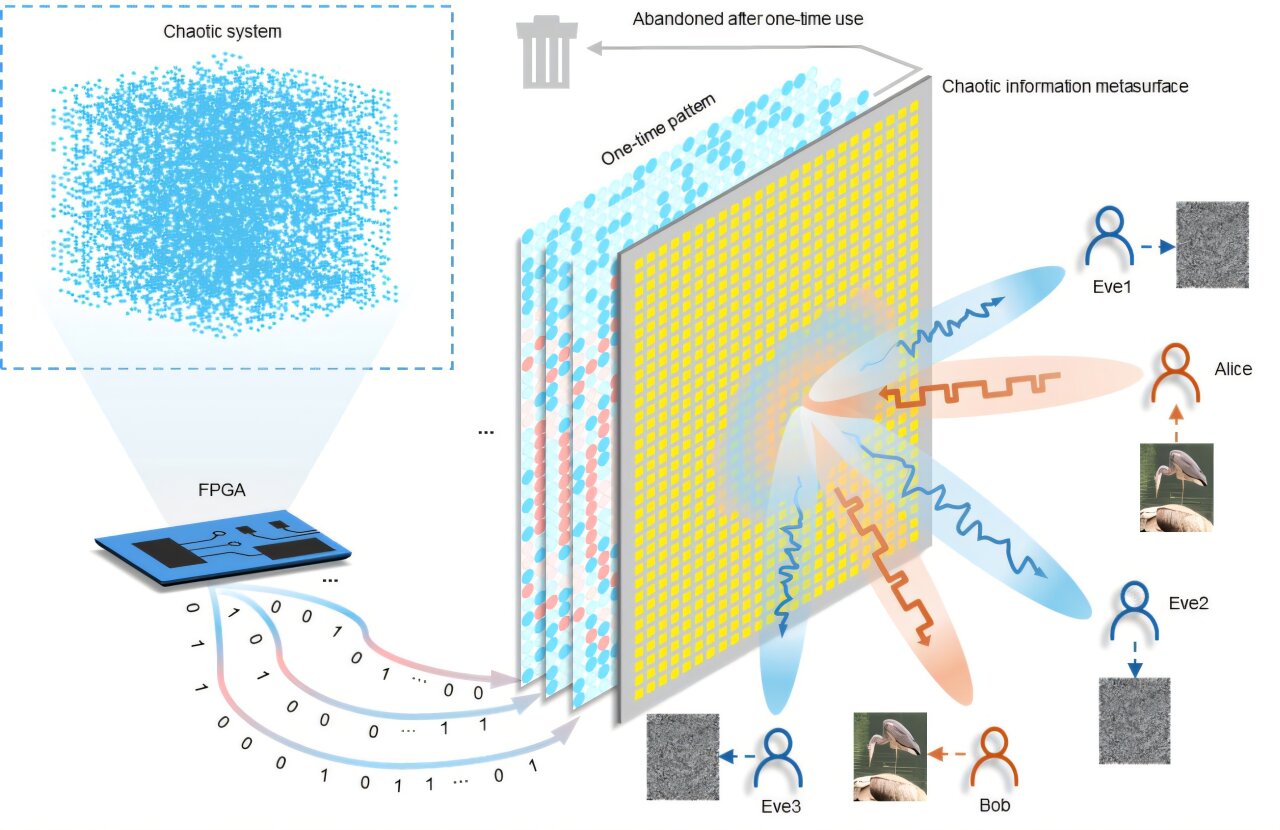Key Takeaways
- Researchers have developed a keyless communication system using a programmable metasurface and chaos theory.
- The system allows secure transmission of data without the need for encryption keys, reducing computational demands.
- This innovative approach could enhance security in various applications, including smart sensors and 6G communications.
New Approach to Secure Wireless Communication
With the growing reliance on internet-connected devices, securing wireless communications has become increasingly critical. Traditional methods often depend on complex algorithms, consuming substantial energy. Addressing these challenges, researchers from Peking University and other institutions have proposed a novel approach using a reconfigurable metasurface controlled by chaotic patterns.
This method was reported in a paper in Nature Communications, co-authored by Vincenzo Galdi, Lianlin Li, and Tie Jun Cui. The researchers aimed to create a communication system that could function without traditional encryption keys, traditionally necessary for protecting transmitted messages. Senior author Lianlin Li highlighted the complexity and vulnerability associated with the sharing and management of these keys in large-scale networks.
The research team sought to rethink traditional security measures, proposing a design that would make signals unintelligible to everyone except the intended recipient. They utilized a metasurface, a thin and engineered surface acting as a programmable mirror, aimed at creating a unique radio signal pattern for each message transmitted. The metasurface is controlled by a small chip that applies chaos-based logic to dynamically generate these patterns, allowing the signal to be sent clearly to the intended receiver while scrambling and rendering it noise in all other directions.
Li explained the system analogy by comparing it to whispering a message that only a person positioned in the correct spot could understand, while others would only hear static. This design ensures that the requirements for changing existing transmitters, receivers, or communication protocols are minimal. The absence of shared keys enhances security, as unauthorized listeners only receive scrambled noise.
The chaotic patterns utilized by the system lend themselves to unpredictable behavior, yielding a level of security superior to conventional pseudorandom number generators, which can become predictable if parts of their output are compromised. The researchers successfully built and tested a prototype using standard wireless frequencies. The results indicated that the designated receiver could decode messages with low error rates, while others in proximity received mostly noise.
Furthermore, the system’s compatibility with current hardware and communication protocols allows for straightforward integration into existing infrastructures. This capability opens doors to practical applications in fields where conventional encryption may be too slow or energy-intensive—such as smart sensors and drones.
Looking ahead, the researchers are focused on miniaturizing the metasurface hardware and adapting it for higher frequency use, like millimeter waves expected in 6G communications. They also aim to enable real-time adaptability to maintain secure communication even as transmitters and receivers move.
Ultimately, the team envisions a shift towards inherently secure devices that do not rely on complex algorithms, passwords, or keys. Security could become an embedded feature of the signal transmission, potentially transforming data protection methodologies in wireless communication.
The content above is a summary. For more details, see the source article.















